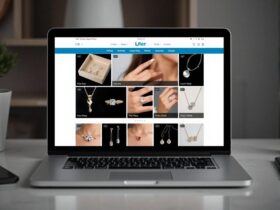Whether you are building a website or a mobile app, UX design is crucial to its success.
Without it, your product is stuck with a high bounce rate and, even if your products are good enough, their quality alone doesn’t persuade leads to become paying customers.
The data speaks for itself:
● Better UX design can boost your conversion rate by up to 400% [Source: Forrester]
● 88% of online users won’t come back to a website that gave them a bad experience
[Source: Amazon]
● Even if a user likes your business as a whole, they’re 50% least likely to visit your
website if they don’t like the experience [Source: Think With Google]
● 74% of businesses believe that UX plays a crucial role in boosting sales
[Source: eConsultancy].
But while most business owners acknowledge the importance of UX design, many don’t have a full understanding of what it implies and what best practices they should follow. UX design means so much more than creating a good-looking product. It’s about creating a flawless user experience that meets the expectations of your targeted personas, and that can convert leads into consumers.
So, what is UX design anyway?
Contrary to common belief, UX design is not a synonym for web design. It’s much more than
that. UX design includes aesthetics, as well as interaction, accessibility, usability, and visual
architecture. Effective UX design is not something you can get by picking a random free
template from the web. More often than not, it’s something created in a design agency, after defining your consumer personas and going over your strategic objectives.

Broadly speaking, the goal of UX design is to boost customer satisfaction by creating a digital product (website, app, etc.) that’s easy to use and pleasant to interact with. UX design
includes a nice-to-look-at interface, but, beyond that, it creates meaningful experiences that
make the user want to come back. If designing your own interface is beyond your skills, there are plenty of good UI/UX design services to hire, which will work with you to turn your vision into reality. They can also help steer you away from pitfalls and bad design choices.
Going into more detail, UX design encompasses essential principles such as:
● Deciding what kind of experience the user will have when interacting with your product.
● Understanding your users’ pain points and needs through empathy.
● Living up to your brand’s promise by offering an experience that is consistent with your
core values.
● Combining art and science to generate pleasant emotions for everyone who comes in
contact with your product.
● Anticipating your users’ needs and offering them a product that they may not have
known they needed.
● Gathering user feedback to validate your design and tweaking it until it meets its full
potential.
In UX design, the user is at the core of everything. You’re not merely designing something to
look pretty on a desktop or mobile screen. You’re designing something for the user who holds the screen, and their satisfaction should be your end goal.
UX design requires a multidisciplinary approach that takes as many elements from engineering and computer sciences as it does from art and cognitive psychology. A great UX designer is not only a designer. They’re also someone with strategic thinking who knows how to research user expectations and use empathy to develop innovative solutions.
Timeless UX practices for a final product that wows the user
The perfect UX depends on many factors, and the specifics should be determined after you
conduct thorough research on your users’ needs and expectations. However, in broad strokes, these are the UX best practices that every designer should follow to create a stunning product that is both nice-to-look-at and exciting to use.
Research your audience
We really couldn’t overemphasize the importance of audience research in UX design, especially when it comes to UX design San Fransisco. There’s no such thing as a universally good product, only a product that’s good for your target audience. So, who is this target audience made up of, and what does it want from you?
● Look at demographics. Details such as age, gender, location, job, and education level
matter if you want to offer the perfect user experience.
● What are your users’ needs, and what can your interface do to meet them?
There are many ways to conduct this research and find out what users will think of your
product. For example, you can analyze how they interact with similar products from
competitors, conduct surveys to gather feedback, and, of course, do a lot of A/B testing. In this day and age, there’s no shortage of data. The trick is knowing how to interpret it.
Don’t change tried and tested strategies just for the sake of standing out.
According to Adobe research, 67% of users want companies to offer more authentic
experiences, and 54% want to see personalized content. Companies are fully aware of this
thirst for authenticity, which is why they go above and beyond to stand out. Generally speaking, that’s a good thing. Higher user expectations push companies to innovate and deliver products that make a difference and don’t just offer a generic experience.
However, it’s easy to cross the line and mess up tried and tested formulas just because you
want to do something unique. Uniqueness itself is good, but it must still serve a purpose. Don’t reinvent the wheel and change things in a way that confuses the user. For example, an
interesting color scheme or homepage animation can boost engagement and make you stand out, but using a quirky unreadable font or placing the navigation bar in an odd place will have the opposite effect.

Keep things simple and clutter-free
Also related to the same trap of overachievement is the tendency to include too many
elements in the hope of impressing the user. One or two standout elements are more than
enough to showcase authenticity on a page. Too many striking elements on the same page
overwhelm the user and distract them from your products and services, leading to a higher
bounce rate.
Be consistent
Find something that works and stick to it. All your pages should have a logical and seamless
flow. This way, from the moment they arrive on your website, users go through a step-by-step journey to do what you want them to, whether that’s clicking on a subscribe link or ordering a product online.














Leave a Reply